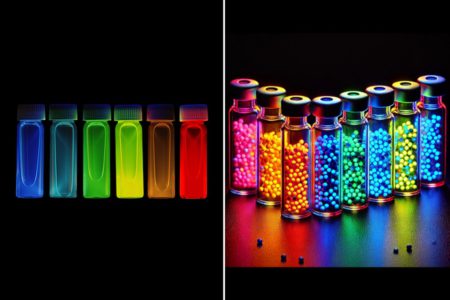
Over the years, my laptop has been my trusted companion, helping me with work, entertainment, and even some light gaming. But as time passed, it started slowing down, making even simple tasks frustrating. Instead of rushing to upgrade, I decided to optimize it and breathe new life into my aging device. Here’s how I successfully sped up my old laptop without spending a dime on hardware upgrades.
1. Uninstall Unnecessary Programs
The first thing I did was declutter my laptop. Over time, I had installed numerous applications, many of which I no longer needed. I went to Control Panel > Programs > Uninstall a program and removed all unnecessary apps. This freed up space and improved performance.
2. Disable Startup Programs
I noticed my laptop took forever to boot. After some research, I found that too many startup programs were slowing it down. I pressed Ctrl + Shift + Esc to open Task Manager, navigated to the Startup tab, and disabled non-essential programs from launching at startup. This significantly reduced my boot time.
3. Clean Up the Hard Drive
A cluttered hard drive can slow down performance, so I used Disk Cleanup to remove temporary files, system logs, and old Windows update files. To do this, I simply:
- Typed Disk Cleanup in the Windows search bar.
- Selected my drive (usually C:).
- Checked the boxes for files I wanted to delete.
- Clicked OK to free up space.
I also manually deleted unnecessary downloads, duplicate files, and unused documents.
4. Optimize and Defragment the Hard Drive
Since my laptop had a traditional hard disk drive (HDD), fragmentation was an issue. To optimize it, I followed these steps:
- Opened Defragment and Optimize Drives in the Windows search bar.
- Selected my hard drive.
- Clicked Optimize to start the defragmentation process.
For those using SSDs, defragmentation isn’t necessary, but optimizing the drive via the Windows tool can still help.
5. Adjust Visual Effects for Performance
Windows comes with fancy animations and effects that can slow down an old laptop. To speed things up, I:
- Searched for Performance Options in Windows.
- Selected Adjust for best performance (or manually disabled unnecessary effects).
- Clicked Apply and noticed an immediate improvement.
6. Update Drivers and Windows
Outdated drivers and software can cause slow performance. I ensured my system was up to date by:
- Going to Settings > Update & Security > Windows Update and installing the latest updates.
- Checking for outdated drivers via Device Manager and updating them if necessary.
7. Use a Lightweight Browser
Google Chrome had been my go-to browser, but I noticed it consumed a lot of RAM. I switched to Microsoft Edge and Mozilla Firefox, both of which are optimized for better performance. Disabling unnecessary extensions also helped.
8. Run a Malware and Antivirus Scan
Malware and viruses can hog system resources and slow down a laptop. I ran a full scan using Windows Defender and a lightweight antivirus program like Malwarebytes. This helped remove hidden threats and enhanced my laptop’s speed.
9. Increase Virtual Memory (Pagefile)
When my laptop ran out of RAM, it used virtual memory as backup. To ensure this was optimized:
- I went to Advanced System Settings under System Properties.
- Clicked Settings under the Performance section.
- Went to the Advanced tab and adjusted the Virtual Memory settings.
- Set the minimum size to 1.5x my RAM and the maximum to 3x my RAM.
This helped prevent lags when running multiple applications.
10. Restart My Laptop Regularly
I used to keep my laptop in sleep mode for days, which slowed it down over time. Restarting it at least once a day cleared system memory and improved responsiveness.
11. Use a Lightweight Antivirus
While having antivirus protection is essential, some programs are resource-heavy. I switched to Windows Defender, which provided solid protection without slowing down my laptop.
12. Install an Alternative Operating System (For Advanced Users)
If your laptop is still sluggish, consider switching to a lightweight OS like Linux (Ubuntu, Mint, or Lubuntu). These operating systems require fewer resources and can make an old laptop feel brand new.
Final Thoughts
By following these simple yet effective tweaks, I was able to speed up my old laptop without upgrading any hardware. If your laptop is running slow, give these tips a try before considering an expensive upgrade.
Let me know in the comments if any of these worked for you or if you have other tricks to boost performance!
Source: Read MoreÂ




